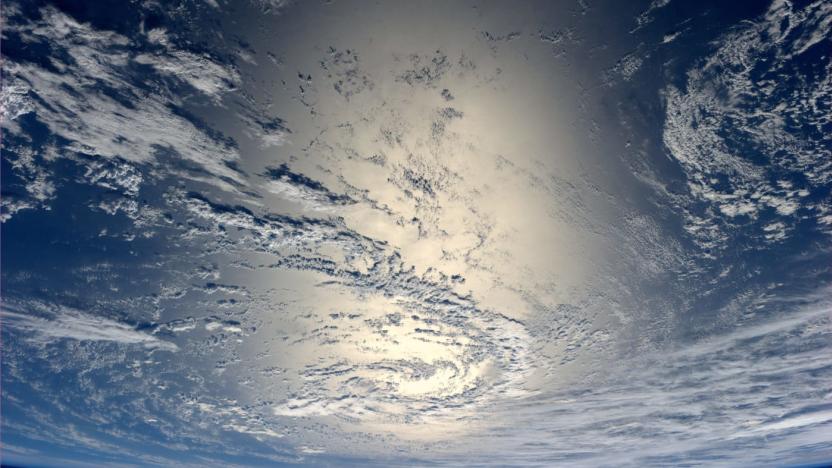Scientific American
Latest

Giant black hole could be to blame for brightest supernova ever
3.8 billion years ago, a star in the southern sky exploded and released 570 billion times more light than our sun and more than twice as much as any other recorded supernova. That star, dubbed ASASSN-15lh, is the brightest supernovae ever observed and, a year after witnessing its superluminescence in 2015, astronomers believe that they've figured out why it burned so brightly: It was being eaten by a supermassive black hole a billion times more massive than the sun.

Exoplanet census suggests Earth really is special
There are an estimated 700 million trillion terrestrial planets in the observable universe. Among them, Earth may very well be one of a kind according to a new study from Uppsala University in Sweden. Astronomer Erik Zackrisson and his team have been running computer simulations to model all of the terrestrial planets that are likely to exist in the universe. The probabilistic exoplanetary statistics that they've gleaned from these simulations could potentially upend the Copernican principle and will soon be published in The Astrophysical Journal (it's currently up on arXiv).

Google Science Fair winners announced: grilled chicken, ovarian cancer, asthma take center stage
Google's first-ever science fair came to a close yesterday, as 15 finalists, ranging in age from 13 to 18, showed off their smarts at Google HQ. Top honors went to three young ladies -- score one for the girls -- in three separate age groups, but there could only be one Highlander Grand Prize winner. The big win went to Shree Bose for an experiment which focused on improving treatment of ovarian cancer, following accumulated resistance to chemotherapy drugs. Lauren Hodge and Naomi Shah also took home trophies for their experiments which dealt with carcinogens in grilled chicken and reducing reliance on asthma treatment, respectively. Along with trophies built of Legos, these young brainiacs took home prizes that included lifetime subscriptions to Scientific American and big-money scholarships ranging from $25,000 to $50,000. A very long video documenting the award ceremony can be found -- featuring a shocking lack of baking soda volcanoes -- after the break.

Google Science Fair 2011 boasts big names, big prizes (video)
Dust off the baking soda and bust out the vinegar, because Google's throwing a science fair. That's right, the internet giant is taking the time-honored tradition of hastily constructed teenage science experiments online. Entrants must be between 13 and 18 years old and submit their projects (in English) via Google Sites by April 4th. Once the projects are in, a panel of real-life teachers will select 60 semi-finalists. From there, the pool will be narrowed down to a group of 15, who will attend an in-the-flesh fair at Google headquarters in Mountain View, CA, this July. The big event's judges include CERN's Rolf-Dieter Heuer, Google's Vint Cerf, and Nobel Laureate Kary Mullis. Grand prize winners in three age groups will receive a $50,000 scholarship, a trip to the Galapagos islands, and some stuff from LEGO and Scientific American. On second thought, maybe the baking soda volcano isn't such a great idea. (Rube Goldberg-inspired promo video after the jump.)

Teaching kids reality with virtual worlds
There seems to be an increased awareness of educational gaming lately, and the positive effect virtual worlds can have on children. For example, we've heard about how gaming can actually improve a child's "mental performance for both verbal and scientific tasks." This is certainly an about-face from what most of us were taught as youngsters playing our Nintendos and Segas.In the latest issue of Science magazine, educators suggest something that we gamers have known for a while: using virtual worlds to stimulate real-world situations in the classroom will actually help students develop useful skills that may aid them later in life or even a future technology-based career. This issue cites many education-based virtual worlds created solely to aid students, such as River City, Alien Contact!, Food Force, Whyville and more. If you have a school-aged child and would like to get them into one of these educational programs, check out this article at Scientific American, or the latest issue of Science magazine for more info.

What EVE's virtual economy can teach us about real economies
The work of Dr. Eyjólfur Guðmundsson has been discussed quite a bit online, but offline citizens of our planet have probably never heard of his work monitoring EVE Online's incredible economy. Scientific American aims to change that with an article entitled "What Can Virtual-World Economists Tell Us about Real-World Economies?" Dr. Guðmundsson lays out the basics of his work for folks unfamiliar with online economies, explaining how the vagaries of spaceflight can effect the price of, say, light drones or mining lasers.It's probably a bit low-key for hardcore EVE players, and even folks who have played a fantasy title's Auction House will have the gist. Still, it's always interesting to listen to 'Eyjó' hold forth on online economics. The passion the people behind EVE feel for their micro-world is tangible, and it's great to see some of that passion being made available to the masses.


